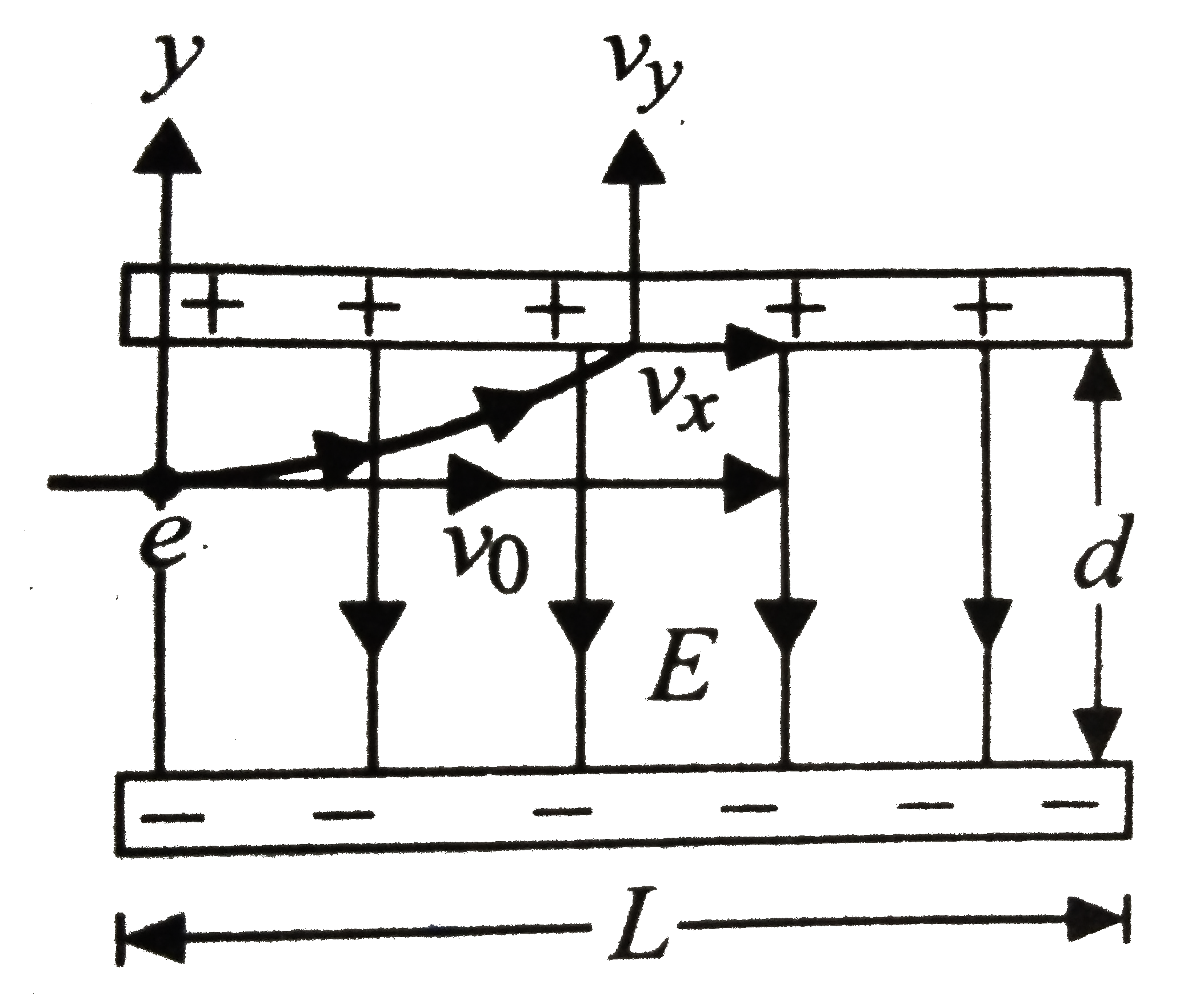A particle of mass 1.96×10−15 kg is kept in equilibrium between two horizontal metal plates having potential difference of 400 V separated apart by 0.02 m. then the charge on the particle is (e= electronic charge)
3e
6e
2e
5e
The correct Answer is:B
To find the charge on the particle, we can follow these steps:
Step 1: Calculate the Electric Field (E)
The electric field (E) between two parallel plates can be calculated using the formula:
E=ΔVd
where ΔV is the potential difference and d is the separation between the plates.
Given:
- ΔV=400V
- d=0.02m
Substituting the values:
E=400V0.02m=20000N/C=2×104N/C
Step 2: Set Up the Force Equilibrium
Since the particle is in equilibrium, the electric force (F_E) acting on it due to the electric field must balance the gravitational force (F_g) acting on it.
The gravitational force is given by:
Fg=mg
where:
- m=1.96×10−15kg
- g=9.8m/s2
Calculating Fg:
Fg=1.96×10−15kg×9.8m/s2=1.92×10−14N
Step 3: Relate Electric Force to Charge
The electric force (F_E) acting on the particle can be expressed as:
FE=QE
where Q is the charge on the particle.
Since FE=Fg, we can write:
QE=mg
Step 4: Solve for Charge (Q)
Now, substituting the values we have:
Q⋅(2×104N/C)=1.92×10−14N
Solving for Q:
Q=1.92×10−14N2×104N/C=9.6×10−19C
Step 5: Express Charge in Terms of Electronic Charge (e)
The charge of an electron e is approximately:
e=1.6×10−19C
Now, we can express Q in terms of e:
Q=9.6×10−19C1.6×10−19C=6e
Conclusion
Thus, the charge on the particle is 6 times the electronic charge.
---
The electric field (E) between two parallel plates can be calculated using the formula:
E=ΔVd
where ΔV is the potential difference and d is the separation between the plates.
- ΔV=400V
- d=0.02m
E=400V0.02m=20000N/C=2×104N/C
Since the particle is in equilibrium, the electric force (F_E) acting on it due to the electric field must balance the gravitational force (F_g) acting on it.
Fg=mg
where:
- m=1.96×10−15kg
- g=9.8m/s2
Fg=1.96×10−15kg×9.8m/s2=1.92×10−14N
The electric force (F_E) acting on the particle can be expressed as:
FE=QE
where Q is the charge on the particle.
QE=mg
Now, substituting the values we have:
Q⋅(2×104N/C)=1.92×10−14N
Solving for Q:
Q=1.92×10−14N2×104N/C=9.6×10−19C
The charge of an electron e is approximately:
e=1.6×10−19C
Now, we can express Q in terms of e:
Q=9.6×10−19C1.6×10−19C=6e
Thus, the charge on the particle is 6 times the electronic charge.
Topper's Solved these Questions
- ELECTROSTATIC POTENTIAL AND CAPACITORSBOOK - DC PANDEY ENGLISHCHAPTER - ELECTROSTATIC POTENTIAL AND CAPACITORSEXERCISE - (B) Chapter exercises
17 Videos
- ELECTROMAGNETIC WAVESBOOK - DC PANDEY ENGLISHCHAPTER - ELECTROMAGNETIC WAVESEXERCISE - Sec C
22 Videos
- ELECTROSTATICSBOOK - DC PANDEY ENGLISHCHAPTER - ELECTROSTATICSEXERCISE - Medical entrances gallery
37 Videos
Similar Questions
Two metal pieces having a potential difference of 800V are 0.02m apart horizontally. A particle of mass 1.96×10−15kg is suspended in equilibrium between the plates. If the e is the elementary charge, then charge on the particle is
View SolutionA small oil drop of mass 10−6 kg is hanging in at rest between two plates separated by 1 mm having in at rest between two plates separated by 1 mm having a potential difference of 500 V. The charge on the drop is (g=10ms−2)
View Solution
Knowledge Check
The electric field that can balance a charged particle of mass 3.2×10−27kg is (Given that the charge on the particle is 1.6×10−19C)
A19.6×10−8NC−1B20×10−6NC−1C19.6×108NC−1D20×106NC−1
A particle of charges Q and mass m travels through a potential difference V from rest. The final momentum of the particle is
View SolutionWhat is the amount of work done in moving a charge of 15 between two points kept at a potentia difference of 1.2 V?
View SolutionA charged particle of mass 5×10−5kg is held stationary in space by placing it in an electric field of strength 107NC−1 directed vertically downwards. The charge on the particle is
View SolutionA particle of mass 2×10−5kg moves horizontally between two horizontal plates of a charged parallel plate capacitor between which there is an electric field of 200NC−1 acting upward. A magnetic induction of 2.0 T is applied at right angles to the electric field in a direction normal to both →Band→v. If g is 9.8ms−2 and the charge on the particle is 10−6C, then find the velocity of charge particle so that it continues to move horizontally
View SolutionA particle of mass 2×10−5kg moves horizontally between two horizontal plates of a charged parallel plate capacitor between which there is an electric field of 200NC−1 acting upward. A magnetic induction of 2.0 T is applied at right angles to the electric field in a direction normal to both →Band→v. If g is 9.8ms−2 and the charge on the particle is 10−6C, then find the velocity of charge particle so that it continues to move horizontally
View SolutionA particle A having a charge of 2.0×10−6C is held fixed on a horizontal table. A second charged jparticle of mass 80g stays in equilibrium on the table at a distance of 10 cm from the firsst charge. The coefficient of friction between the table and this second jparticle is μ=0.2. find the range within which the charge of this second particle may lie.
View SolutionA particle of mass 9×10−31 kg having a negative charge of 1.6×10−19C is projected horizontally with a velocity of 106ms−1 into a region between two infinite horizontal parallel plates of metal. The distance between the plates is d=0.3cm and the particle enters 0.1cm below the top plate, THe top and bottom plates are connected, respectively to the positive and negative terminal of a 30V battery. Find the components of hte velocity of hte paricle just before it hits one of the plates.

View Solution
